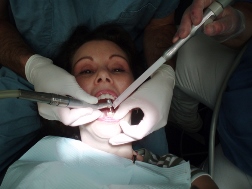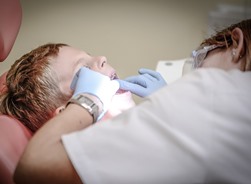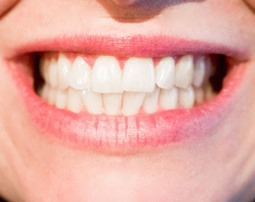How to Pick a Dental Hygienist Training Program near Sandia Texas
 Choosing the ideal dental hygienist program near Sandia TX is an important initial step toward starting your new career in dentistry. But before you can make your selection, you must assess and compare your school options. There is much more to doing your due diligence than picking the college with the lowest tuition or enrolling in the school that is nearest to your home. There are other important issues to consider also, such as the program’s accreditation and reputation. Dental hygienists usually earn an Associate Degree, as compared to a certificate usually earned by assistants, and can take anywhere from 2 to 3 years to complete. Naturally with the longer training of a hygienist comes more expense. We will discuss all of these considerations and supplemental questions that you should be asking the dental hygienist programs you are looking at later in this article. But first, let’s look at the duties of dental hygienists and the training programs provided.
Choosing the ideal dental hygienist program near Sandia TX is an important initial step toward starting your new career in dentistry. But before you can make your selection, you must assess and compare your school options. There is much more to doing your due diligence than picking the college with the lowest tuition or enrolling in the school that is nearest to your home. There are other important issues to consider also, such as the program’s accreditation and reputation. Dental hygienists usually earn an Associate Degree, as compared to a certificate usually earned by assistants, and can take anywhere from 2 to 3 years to complete. Naturally with the longer training of a hygienist comes more expense. We will discuss all of these considerations and supplemental questions that you should be asking the dental hygienist programs you are looking at later in this article. But first, let’s look at the duties of dental hygienists and the training programs provided.
The Job of a Dental Hygienist
 When contrasting the job of a dental hygienist to that of an assistant, the most significant difference is probably that the hygienist works more on their own. Dental assistants work with and in support of the Sandia TX practice and the dentists. Hygienists, while also assisting the practice, deal with the patients more on an individual basis. They are usually the first person a patient interacts with when called from the waiting room. They examine every patient’s teeth and gums and report their results to the dentists. They may also perform basic procedures. Based on state law, a hygienist’s responsibilities may include:
When contrasting the job of a dental hygienist to that of an assistant, the most significant difference is probably that the hygienist works more on their own. Dental assistants work with and in support of the Sandia TX practice and the dentists. Hygienists, while also assisting the practice, deal with the patients more on an individual basis. They are usually the first person a patient interacts with when called from the waiting room. They examine every patient’s teeth and gums and report their results to the dentists. They may also perform basic procedures. Based on state law, a hygienist’s responsibilities may include:
- Removing tartar, stains and plaque
- Applying fluoride treatments
- Polishing teeth and applying sealants
- Teaching patients regarding oral care
- Taking X-rays and developing film
- Removing sutures and applying fillings
In order to be licensed in nearly all states, dental hygienists must graduate from a Commission on Dental Accreditation (CDA) accredited dental hygiene program. They also must pass the National Board Dental Hygiene Exam as well as any state licensure exams. After they have completed these requirements they are considered fully licensed and may add the “RDH” designation to their names, signifying Registered Dental Hygienist.
Dental Hygienist Training Options
Because of the added responsibility in contrast to an assistant, dental hygienists employed in Sandia TX dental practices are generally required to have an Associate Degree in dental hygiene rather than a certificate. These programs can take anywhere from 2 to as long as 3 years to complete and must be accredited by the CDA in almost every state. They are offered in trade and vocational schools as well as community colleges. And in addition to classroom studies learning the fundamentals of dental hygiene, there will be a clinical component to the training as well| A number of programs also offer internships with local dental practices or dentists.
Online Dental Hygienist Training
 Selecting an online dental hygienist program may be a great alternative for receiving your education. Just keep in mind that the program will not be totally online, since there will be a clinical component to your training. But the remainder of your classes will be available by means of your desktop computer in the convenience of your Sandia TX home or anywhere else on your laptop or tablet. For those working while going to college, online dental classes make education much more obtainable. Some may even charge lower tuition fees than their traditional competitors. And additional expenses such as for books, school supplies and commuting may be lessened also. The practical training can often be performed at an area dental office or in an on-campus lab. With both the clinical and online training, everything needed to get the proper education is provided. If you have the dedication for this mode of learning, you may find that enrolling in an online dental hygienist program is the best option for you.
Selecting an online dental hygienist program may be a great alternative for receiving your education. Just keep in mind that the program will not be totally online, since there will be a clinical component to your training. But the remainder of your classes will be available by means of your desktop computer in the convenience of your Sandia TX home or anywhere else on your laptop or tablet. For those working while going to college, online dental classes make education much more obtainable. Some may even charge lower tuition fees than their traditional competitors. And additional expenses such as for books, school supplies and commuting may be lessened also. The practical training can often be performed at an area dental office or in an on-campus lab. With both the clinical and online training, everything needed to get the proper education is provided. If you have the dedication for this mode of learning, you may find that enrolling in an online dental hygienist program is the best option for you.
Questions to Cover With Dental Hygienist Colleges
 Now that you have decided to become a dental hygienist in Sandia TX, you can begin the procedure of comparing schools and programs. As we discussed at the beginning of this article, a number of students start by looking at the cost and the location of the colleges. Perhaps they search for some online alternatives also. Although these are important initial factors to consider, there are a few additional questions that you should ask of the colleges you are looking at in order to make an informed decision. Toward that end, we have supplied a list of questions to help you with your due diligence and final selection of the ideal dental hygienist school for you.
Now that you have decided to become a dental hygienist in Sandia TX, you can begin the procedure of comparing schools and programs. As we discussed at the beginning of this article, a number of students start by looking at the cost and the location of the colleges. Perhaps they search for some online alternatives also. Although these are important initial factors to consider, there are a few additional questions that you should ask of the colleges you are looking at in order to make an informed decision. Toward that end, we have supplied a list of questions to help you with your due diligence and final selection of the ideal dental hygienist school for you.
Is the Dental College Accredited? There are a number of valid reasons why you should only pick an accredited dental hygienist program. If you are planning to become licensed or certified, then accreditation is a requirement in almost all states. In order to take the National Board Dental Hygiene Examination, your dental program must be accredited by the Commission on Dental Accreditation (CDA). Accreditation also helps establish that the instruction you receive is of the highest quality and comprehensive. Sandia TX employers typically desire or require that job applicants are graduates of accredited programs. And last, if you are requesting a student loan or financial aid, often they are not available for non-accredited colleges.
Is Plenty of Practical Training Provided? Clinical or practical training is a necessary part of any dental training program. This applies for the online school options also. Most dental hygienist schools have relationships with local dental offices and clinics that provide clinical training for their students. It’s not only essential that the college you select offers sufficient clinical hours but also provides them in the kind of practice that you subsequently want to work in. For example, if you have an interest in a career in pediatric dentistry, confirm that the program you select offers clinical rotation in a local Sandia TX dental office that specializes in dental services for children.
Are Internships Available? Ask if the dental colleges you are looking at sponsor an internship program. Internships are undoubtedly the ideal means to obtain hands-on, practical experience in a real dental practice. They help students to transition from the theoretical to the practical. They can also help students create professional relationships in the Sandia TX dentistry community. And they look good on resumes also.
Is Job Placement Assistance Provided? Most graduating students of dental hygienist programs need assistance landing their first job. Find out if the schools you are reviewing have job placement programs, and what their job placement rates are. Schools with high job placement rates probably have excellent reputations within the Sandia TX dental community in addition to extensive networks of contacts where they can position their students for internships or employment.
Are Classrooms Small? Ask the colleges you are looking at how big typically their classrooms are. The smaller classes usually provide a more intimate atmosphere for training where students have greater access to the teachers. Conversely, large classes can be impersonal and provide little individualized instruction. If feasible, find out if you can sit in on a few classes at the Sandia TX dental hygienist school that you are most interested in in order to experience first hand the amount of interaction between students and teachers before enrolling.
What is the Total Expense of the Program? Dental hygiene schools can fluctuate in cost based on the length of the program and the amount of clinical training provided. Other factors, for instance the reputations of the colleges and whether they are private or public also come into play. But in addition to the tuition there are other substantial costs which can add up. They can include costs for such things as commuting and textbooks as well as school equipment, materials and supplies. So when examining the cost of programs, remember to include all of the costs associated with your education. Most colleges have financial aid offices, so make sure to check out what is available as far as loans, grants and scholarships in the Sandia TX area.
Are the Classes Accessible? Before enrolling in a dental hygienist college, you need to verify that the hygienist or assistant program furnishes classes that fit your schedule. This is particularly true if you continue working while getting your education and must attend classes near Sandia TX at nights or on weekends. And even if you choose an online program, you will still need to schedule your clinical training classes. Also, while making your inquiries, ask what the make-up procedure is if you should have to miss any classes due to illness, work or family responsibilities.
Attending Dental Hygienist School near Sandia TX?
Sandia, Texas
Sandia was in the Casa Blanca land grant, issued to Juan José de la Garza Montemayor by Spain on April 2, 1807. The Montemayor family occupied the land until 1852. In 1896 John L. Wade purchased it and established the Casa Blanca Ranch (Wade Ranch). Upon his death the ranch was divided among his heirs, one of whom sold his share to Joseph B. Dibrell. Dibrell gave the task of dividing and selling the land to Fennell Dibrell and Max Starcke, who founded Sandia in 1907. At the time the streets were platted there was only one building in the community. Dibrell and Starcke chose the name Sandia, Spanish for "watermelon," because of the large number of watermelons grown in the area. The lots in Sandia were all sold within eight months, during which time a lumberyard, a hardware store, two grocery stores, a meat market, a boardinghouse, and a barbershop opened. By 1914 Sandia had 150 inhabitants, a bank, two general stores, and a cotton gin. The population steadily increased and in 1925 was estimated at 200. It had increased to 500 by 1927. In 1936 Sandia had three businesses, two churches, multiple farm units, and several dwellings and was a stop on the Texas and New Orleans Railroad. In 1940 it had a population of 300 and fifteen businesses. Sandia had a peak population of 310 during the 1960s and early 1970s. Residents numbered 215 in 1974 and 1990.
As of the census[1] of 2000, there were 431 people, 139 households, and 106 families residing in the CDP. The population density was 445.3 people per square mile (171.6/km²). There were 158 housing units at an average density of 163.2/sq mi (62.9/km²). The racial makeup of the CDP was 75.87% White, 1.16% African American, 3.25% Native American, 0.93% Asian, 0.23% Pacific Islander, 16.47% from other races, and 2.09% from two or more races. Hispanic or Latino of any race were 61.25% of the population.
There were 139 households out of which 35.3% had children under the age of 18 living with them, 61.2% were married couples living together, 9.4% had a female householder with no husband present, and 23.7% were non-families. 22.3% of all households were made up of individuals and 7.9% had someone living alone who was 65 years of age or older. The average household size was 3.10 and the average family size was 3.63.
In the CDP, the population was spread out with 30.4% under the age of 18, 7.9% from 18 to 24, 27.6% from 25 to 44, 22.7% from 45 to 64, and 11.4% who were 65 years of age or older. The median age was 35 years. For every 100 females there were 105.2 males. For every 100 females age 18 and over, there were 109.8 males.
Enroll in the Best Dental Hygienist Program near Sandia TX
Enrolling in the ideal dental hygienist course is imperative if you want to take the National Board Dental Hygiene exam or, if required in your state, become licensed. As we have covered, there are a number of options available to receive your training and it takes a fairly short period of time to become a dental hygienist. You can obtain your formal education through dental programs at community colleges, trade schools, vocational schools and technical institutes. Graduates of these programs generally obtain an Associate Degree. Dental Hygienists usually require roughly 2 years of studies prior to entering the job market. When pursuing a degree you can choose to attend classes on-campus or online. Whichever mode of training you decide to pursue, by asking the questions provided in this article you will be in a better position to make the ideal choice. And as a result, you will be ready to begin your journey toward becoming a dental hygienist in Sandia TX.
More Great Cities in Texas
Business Results 1 - 10 of 1

